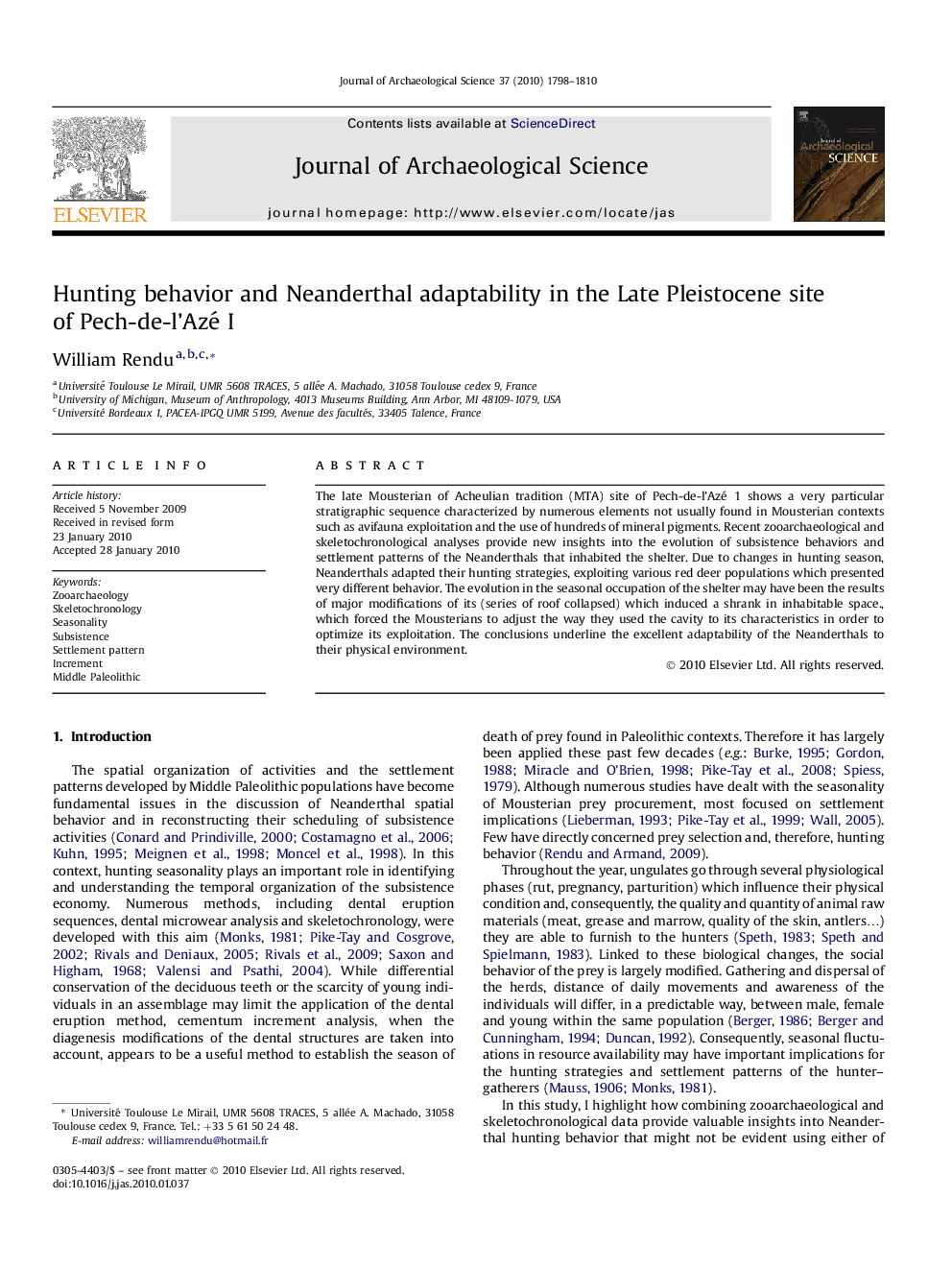| Article ID | Journal | Published Year | Pages | File Type |
|---|---|---|---|---|
| 1036703 | Journal of Archaeological Science | 2010 | 13 Pages |
The late Mousterian of Acheulian tradition (MTA) site of Pech-de-l'Azé 1 shows a very particular stratigraphic sequence characterized by numerous elements not usually found in Mousterian contexts such as avifauna exploitation and the use of hundreds of mineral pigments. Recent zooarchaeological and skeletochronological analyses provide new insights into the evolution of subsistence behaviors and settlement patterns of the Neanderthals that inhabited the shelter. Due to changes in hunting season, Neanderthals adapted their hunting strategies, exploiting various red deer populations which presented very different behavior. The evolution in the seasonal occupation of the shelter may have been the results of major modifications of its (series of roof collapsed) which induced a shrank in inhabitable space., which forced the Mousterians to adjust the way they used the cavity to its characteristics in order to optimize its exploitation. The conclusions underline the excellent adaptability of the Neanderthals to their physical environment.
